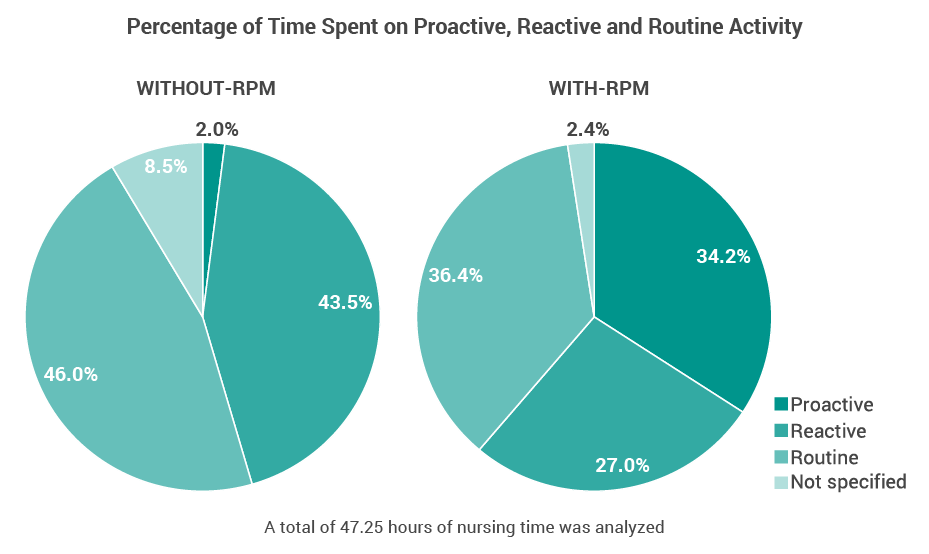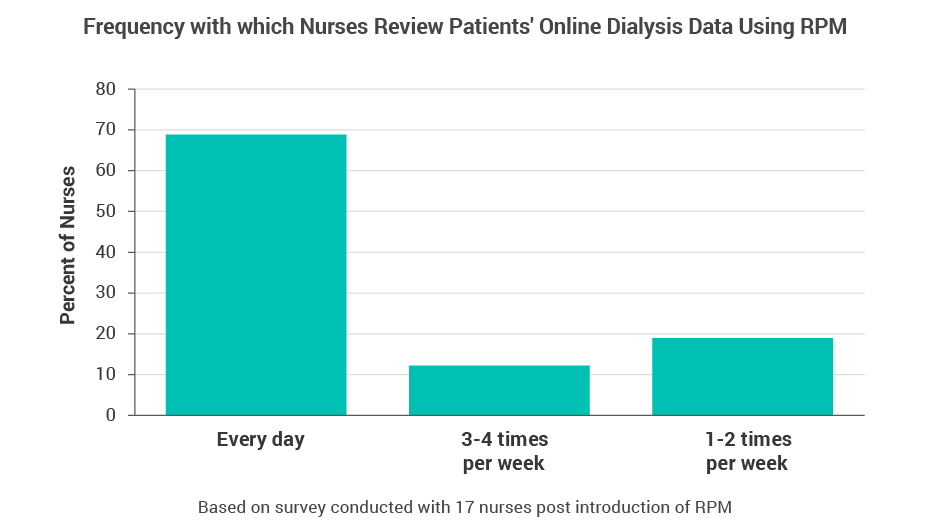Proactive Patient Management
Background
APD patients are required to record details of their therapy and clinical data on a daily basis. These details are then reviewed at each clinic visit as part of the overall assessment.
Two-way connectivity provides an opportunity for early intervention of dialysis issues in what has been predominately reactive care.
Remote Patient Management (RPM) enables patients to be effectively prioritized.
New APD cyclers with two-way RPM technology allows nurses to view dialysis details remotely in a timely manner, proactively manage clinical issues and make program changes as needed.
Objectives
Method
Four PD nurses from 4 UK hospitals were observed prior and post use of APD with RPM
A tool was designed to log the time PD nurses spend on different types of task, specifically whether the task is:
- PROACTIVE - Anticipatory, preventative and change oriented (e.g. clinician discussions, phone calls/visits to patients and reviewing daily dialysis records)
- REACTIVE - Responsive (e.g. urgent patient consultations and assessments)
- ROUTINE - Regular planned activities (e.g. scheduled line changes and review consultations)
PD nurses were observed and their behavior logged throughout their working day on two occasions:
- Once between July 2015 and July 2016 (before the introduction of APD with Remote Patient Management)
- Once between September 2016 and March 2017 (6–13 months after APD with Remote Patient Management was established)
Note: Claria with Sharesource was used in this study which is similar in function, design and indication to Amia with Sharesource

